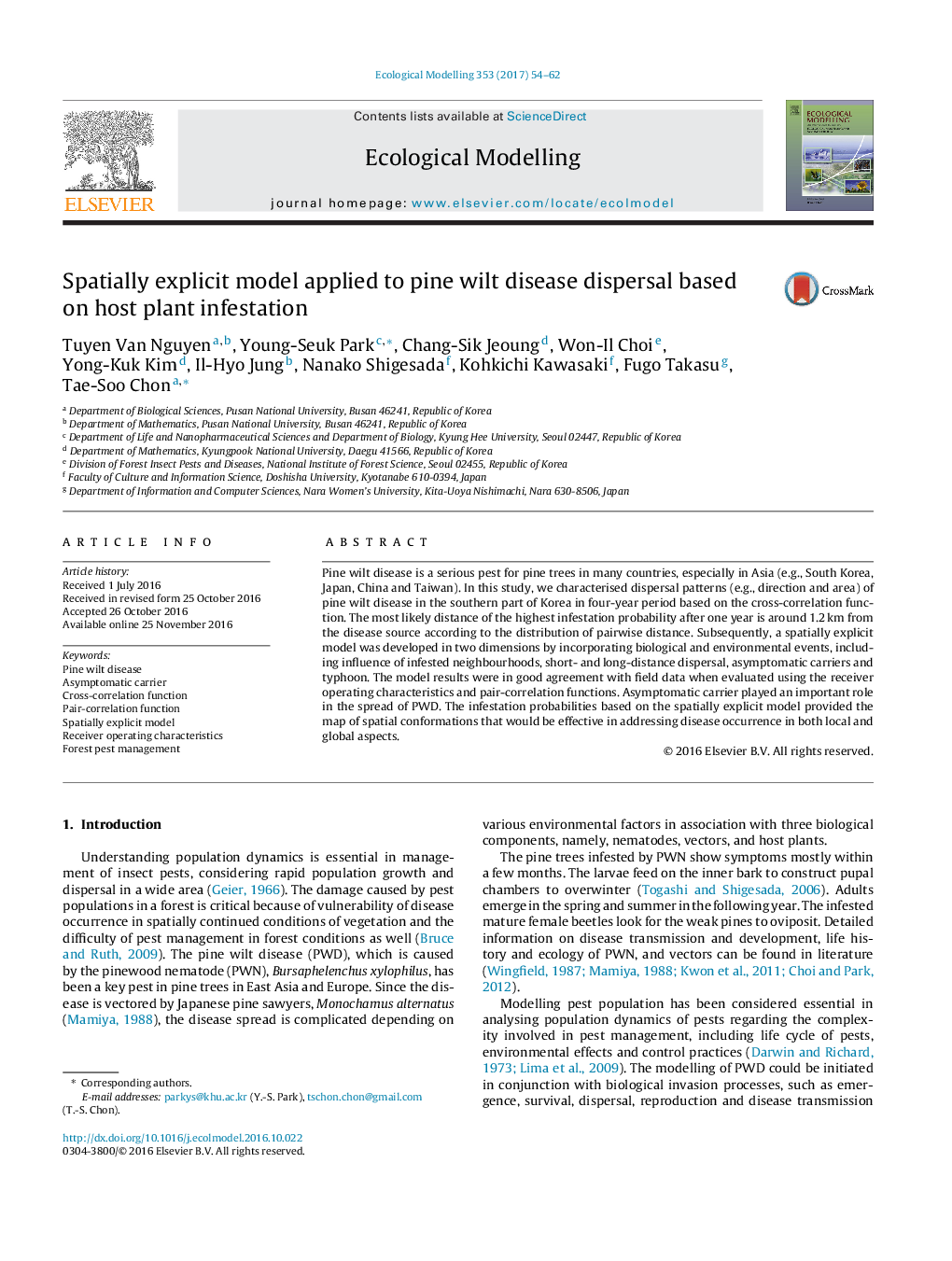| Article ID | Journal | Published Year | Pages | File Type |
|---|---|---|---|---|
| 5742166 | Ecological Modelling | 2017 | 9 Pages |
â¢Simulation by a spatially explicit model incorporating biological and environmental events show good agreements with field data.â¢Dispersal pattern of PWD was effectively characterized in the spatial model.â¢The infestation probabilities provided a map of spatial conformations to address PWD occurrence.â¢The most likely distance from the disease source was around 1.2 km per year.â¢Asymptomatic carriers played an important role in PWD dispersal.
Pine wilt disease is a serious pest for pine trees in many countries, especially in Asia (e.g., South Korea, Japan, China and Taiwan). In this study, we characterised dispersal patterns (e.g., direction and area) of pine wilt disease in the southern part of Korea in four-year period based on the cross-correlation function. The most likely distance of the highest infestation probability after one year is around 1.2Â km from the disease source according to the distribution of pairwise distance. Subsequently, a spatially explicit model was developed in two dimensions by incorporating biological and environmental events, including influence of infested neighbourhoods, short- and long-distance dispersal, asymptomatic carriers and typhoon. The model results were in good agreement with field data when evaluated using the receiver operating characteristics and pair-correlation functions. Asymptomatic carrier played an important role in the spread of PWD. The infestation probabilities based on the spatially explicit model provided the map of spatial conformations that would be effective in addressing disease occurrence in both local and global aspects.
